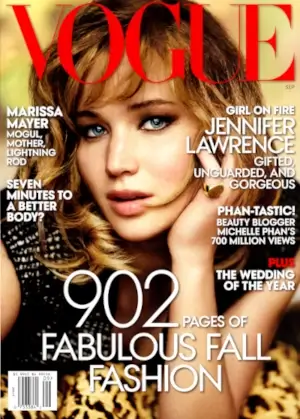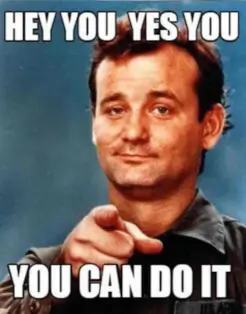What I am going to tell you to do is think about it from the perspective that you don't have to figure it out all on your own, and you don't have to figure it all out today.
What you do have to do is put a plan in place, and this discussion today is going to be the first part of that plan.
Why we're talking about monetization is,
how do magazines make money?
Let me start with that question.
On the back of that then, is the notion of, how do you as a magazine owner make money?
And for most of us, when we think about magazines, you're thinking about subscription sales.
You're thinking about picking up the magazine at Walgreens or CVS or the airport Newsstand.
That's number two.
And, the third thing of the three legs of the stool for most people: advertising.
So what I'm here to tell you is that as a digital magazine publisher, and one inside our platform, there are all kinds of other monetization options that
we'll share with you and show you how to leverage and turn on and as publisher, as the boss of the magazine.
It's really going to be up to you to decide which of those levers you're going to throw and which of those don't make sense for you to throw.

So, on the docket today is the first part of this.
And what I want to present to you is the concept of the free issue.
And the concept, or not, not just free issue, but going about this as a free publication.
Here's the thing:
If you're starting a magazine, how you make money from the magazine cannot be an afterthought.
Starting a magazine, your business plan, your marketing plan, your monetization plan, can't all be distilled down to,
"Oh, well, you know, I'm going to give it away for free, and when I get a good circulation, then I'm going to start charging for it!"
That is the fastest way to drive your airplane off the runway and into the ocean that I've ever seen.
When you've got a business plan with monetization as part and parcel of it, you treat your magazine like a real business, and that means your business then treats you like an owner.
And for those of you that is not that have never been entrepreneurs before, for whom you know, hanging out your own shingle is this sort of whoa, this different concept,
put yourself now, give yourself permission to step into the shoes of you as magazine owner, you as publisher, because that's the really the first step behind getting everything else right is addressing internally and internalizing that right now you're a magazine publisher.
Give yourself permission to wear that hat when you look at the monetization from the perspective of, I'm the owner, I'm the publisher, this is my thing.
And you do it on the way in your loose course, general, I'm going to get from A to B, and I'm going to do this thing with free and
it becomes a roadmap you get to the point where you have consistent income coming in from your magazine, through new subs, new issue sales, through new subscription sales, and maybe most importantly, at least in the sort of the first shot off the bow, so to speak, or across the bow, is the idea of having recurring income.
And let me tell you the first time your reader subscriptions renew, whether it's monthly, quarterly, annually, whatever it is whenever those subscriptions renew the first time, and you go,
"Wait a minute.
"I didn't have to generate, do the work again, to generate that income again, not in the same way that you do when you're going into a day job.
"I didn't have to go punch a clock and clock in and clock out.
"I produced content that I was going to be selling anyway, and, oh, by the way, here all these people that have already agreed to basically prepay for this content.
"Now I've just got to deliver it, but I'm going to do it anyway to get my next issue done.
So your whole outlook shifts, and you realize that maybe for the first time in your life as a magazine publisher, you've got a way to make your income grow.
Zero, other than beyond the you know, crappy little three or 4% raise that a nine to five job the boss at the company gives you if you want to grow your income as a magazine publisher, it's really no more difficult than structuring arrangements with marketing partners and going out giving them some something in it to for them to win with and following the plan.
And we'll get into some of these more advanced plans and things like that.
We've covered all this stuff in our MagCast Academy and Bobsled Run, touch the surface of it in a future issue or future session of the workshop Wednesdays.
But I just want to sort of put that out there, this outlook shift that happens that is absolutely magnificent and a real game changer internally, when you realize you're building something in this income stream and building something in a magazine name that's a saleable asset.
This isn't just you trading time for money, you saying to your employer or them saying to you that you're worth $97,575 a year, and that's your salary.

As a magazine publisher, not only are you developing an income stream through recurring subscriptions, through the ability to go out and sell new issues, to sell your back issues, but you're also building a real business that's a saleable asset.
And, I'll tell you, it's not an unusual thing for us to see magazines in our platform trade hands, where some publishers built a magazine to a certain level, and they sell it to another individual, to a company, to another company, what have you.
That's not weird.
And, the reason is that those are real assets.
And ,companies come in and they go, "Oh, you've got 14,000 subscribers. Here's your annual revenue from subscriptions."
Okay, that's the outlook change that I'm talking about here.
So, let's get into the recipe and get into how to put this together, keeping in mind that this is just part one.
We're going to cover monetization in more depth than other upcoming workshop Wednesdays.
Okay?
First thing, throw out the door everything you think you know about how magazines make money.
We won't be able to cover all this stuff today.
Just want to reiterate one more time: there's more in the future.
But the point is that what you think you know that,
"Oh, magazines make money from these three pillars, subscriptions, individual issues on the airport newsstand and stuff like that, and
they make money from ads."
Throw it away.
Second is, forget about the notion of you not running other companies ads inside your magazine.
Some people have this night, this notion of, oh my gosh, but I don't want to sully the editorial reputation of my magazine by running ads inside it.
And, I have to just say that's baloney.
Magazines are the only media out there that the consumer buys, in part for the ads.
This has been time and again.
This shows up in surveys and ain't nobody out there subscribing to cable TV to get more ads.
Nobody is doing that.
It doesn't exist yet.
Magazines are this sort of well, they are an anomaly in that people buy the magazine, partly for the ads.
Look at
Vogue.
 Vogue
Vogue is hundreds of pages, absolutely hundreds of pages of ads, and certainly dozens before you even get to a table of contents.
And that's part of the selling point of
Vogue is that you get to see all these big, beautiful, glossy ads.
So push it aside, and we will cover ads later.
If you have any trepidations about, "Oh my gosh, I don't want to do ad sales. I don't know how to do it! Put it aside."
We're going to talk about that in a future session.
Okay, step three of our recipe is right now, flush down the toilet now and forever.
The notion of having a free magazine that you'll give away to get started, and someday you'll start charging for it, that is an absolute wave off: Don't do that.
There's a way to do it, but it isn't involving.
It doesn't involve you just slapping a $0 sticker price on it and hoping people are going to pick it up and going on flogging something for free.
The challenge is:
When you're giving away something for free that's already free, there's no beneficial outcome for somebody in picking up and working with you as a marketing partner, because, well, people can get this for free anyway.
Why do I want to team up with you?
So?
So those are the first three steps of this.
Forget about what you know about what you think you know, about how magazines make money.
Forget about the notion of you not running ads.
And number three, forget about the concept of having 100% off free magazine that you're just going to give away and somebody will start charging for it.
Flush those concepts.
Recipe part two, we're going to look at who's your ideal reader, and these are the questions that you want to be asking.
- Where do they live?
- Where do they play?
- How old are they?
- What do they talk about over their kitchen table?
- Are they single? Are they in a relationship?
- What's their gender identity?
- What's your educational background?
- What brand loyalty do they have?
And I'm not talking about to your magazine, I'm talking about in the world at large.
They're a Chevy driver, they're a Ford driver, they're an Audi driver.
They buy such and such shoes.
They're a Nike person.
They're a Reebok person.
You get the idea.
So these are the the sort of, the general gist of the kinds of things that we want to be asking to identify who our ideal reader is.
What we're going to do next is make a list of the top 50.
Yes, I really do mean 50 brands that are in your space, even tangentially.
So if you're making a wine magazine, it wouldn't be crazy to see a cheese brand associated as being in your space, even though, well, it's cheese.

It's not weird that's fine.
Next thing you're going to do is list couple of dozen brands that're outside of your space, that your avatar associates with.
I'll show you what I mean in a second.
Next couple of things in these last three we're going to address in a future session.
But, these last three things are, what do you think your sticker price should be?
What do you think your subscription price should be?
And, really think about this one.
What's more important to you from the word go?
Is it growing your revenue, or is it growing your readership?
Now the thing is, this ends up being this sort of balancing scale, where growing revenue goes this way, then means growing fewer readers, but you want more readers, then you tend to get less revenue because you're offering bigger promos.
Think about this now and extremely loose numbers, just to get you a concept of what I'm talking about here.
Energy wise, if you're putting 70% of your energy and your resources, your commitments, into growing your revenue, that means only 30% of the time is going to be available and resources to develop growing your readership.
If you're putting 70% of your time into growing your readership, that means 30% of the time is going to be available to grow the revenue.
So there definitely is that balancing act.
Think about what's important to you and, "Oh, well, I want to do both equally!"
Forget about that.
Pick one that's more important to you.
So here's our exercise, if you haven't already, get yourself Zoho Docs, Google Docs, Microsoft, 365, account number two, we're going to consult chat, GPT, or any of the the AIS, pick your favorite.
I have been using Perspective.technology a lot lately, so we are going to, perspective.technology today instead of ChatGPT, just to mix things up a little bit.
So we're going to ask,
"Describe in 10 bullet points the avatar of a reader of a quarterly app-only magazine called Calligraphy Crush
It's a real magazine in our platform.
Last couple of sessions, I've been talking about a little league coaching magazine, so I decided just to mix it up a little bit today.
So here we go.
We're going to pop this in here describing 10 bullet points the avatar for reader of a quarterly app only magazine called calligraphy crush.
There we go.
So here are the 10 bullet points that are coming back.
- Art enthusiast
- Tech savvy
- Creative
- lifelong learner
- Community oriented
- Aesthetic appreciation
- Age range tends to be likely to be 25 to 45
- Educational background often has a background in arts, design related, though not exclusively, professional aspirations some readers may pursue calligraphy as a professional or side gig, while others are hobbyists, absolutely and well informed
- Keep up the latest trends and innovations and
- Appreciates high quality expert content
I will tell you with one exception this, this report, if you will.
This answer coming out of Perspective.
And, this is a basically an AI aggregator, with one exception, the only thing being tech savvy.
That tends to not be the clear thing of
Calligraphy Crush magazine reader.
They tend to be less than highly tech savvy.
I'd say probably... probably 20% are tech savvy.
Other than that, it's nailed it.
So, we're going to copy this and toss it into our our spreadsheet.
We'll do that in a second.
So the next step is:
Does it pass the smell test?
And lo and behold! at least in the case of the
Calligraphy Crush magazine that I'm really familiar with, it absolutely does pass the smell test.
So next thing we're going to go is asking,
What are the top 50 brands?
And if you want to pop in in the US, if you're a US based magazine, us facing fine, you can certainly do that just as easily with in Japan, in Australia, whatever it may be, and let's go and toss this in here.
Who are the top 50 brands in the US?
And I will do that because I do want us brands that people interested in calligraphy associate with the art.
Here we go.
Here's some of the top brands in the US that people interested in calligraphy commonly associate with the art based on the search results, Monte Mart, Lam Shaffer, pilot, Pantel, Tombo, Sakura, absolutely.
When I lived in California, I used to drive by the Sakura facility in Orange County all the time.
Windsor Higgins, well regarded for the range of calligraphy, and some very much familiar with Higgins, also Fabriano, yet provides paper.
These are brands that you're in the calligraphy field, these are the types of brands that are part and parcel to most of your readers having that understanding.
And, the beautiful thing is, irrespective of what niche you're in, no matter what your topic is, you can do the same thing and say who are the top 50 brands in the US that people interested in automotive racing, associate with racing.
One of the top 50 brands.
People interested in wildlife photography, associate with their their interest.
No matter what it is, it's going to kick back and give you a starting point.
Are all 50 of these brands going to be absolutely kick ass?
Spot on for you?
No?
Is it going to be a great starting point, you know, leaping off place you can count on.
So now we're going to drop these things into a new doc called magazine avatar with prospective advertising and marketing partners.
Okay, next we're going to go back to GPT, and we're going to say, or in this case, Perspective, list 25 brands outside of calligraphy.
The people interested in calligraphy and who would buy
Calligraphy Crush magazine typically identify with so this is going back right here to our avatar.
Does it make sense that what it's describing our avatar?
Does it pass the smell test?
Same thing here, and here's what I mean, if you're making a magazine that's all about barbecue, for you to have stuff in there that are vegan recipes.
One recipe makes sense, but to have bumper to bumper, nothing but advertisers, advertising vegan products, and your magazine is all about the vegan lifestyle and experience that doesn't pass the smell test.
So now we're going to go grab these 25 lists.
Get it.
Get a list of 25 brands, people interested in calligraphy, who typically identify with, and let's see what we get this time.
Yes, you can go and do this through whatever your favorite search engine is, and you can take a heck of a lot longer to come to the same answer.
I am, I'm going to encourage you to use the AI not as a place where you're going to be selling your soul to the AI devils, but rather as a real point of leverage that you can get in leapfrogging generations ahead of ideas and concepts.
Here 25 brands outside of calligraphy that people interested in calligraphy and who would buy a calligraphy garage magazine typically identify with Crayola, Etsy.
Those are, oh... Anthropology.
That's not what you might have expected.
But then you'd have, if you think about the avatar and not the matchy-match relationship between "This is a calligraphy magazine..." and "I need to be only talking about calligraphy and only have advertisers for calligraphy products."
If you step outside of that mindset and into the avatar shoes, Hobby Lobby, Aaron brothers, of course, framing supplies, Pottery Barn, Urban Outfitters, okay, Target, IKEA, Fabriano, we saw on the other list, Staples, office supplies.
This is an interesting list, and what we've seen in one of our publications in particular is one of the top selling ads.
Shouldn't say top selling ads.
One of the top performing ads is an ad for a fitness scale, and it isn't a fitness magazine.
It's about as far afield on a direct path from fitness as you can imagine.
Yet, it's one of the top, top producing, top performing ads in the magazine, and it's because it's psychographically matched.
It makes sense when you get into the mindset of the Avatar, when you get into the mindset of the reader, not just oh gosh, it's a photography magazine.
I've gotta be selling photography gear.
Oh, it's a baseball magazine.
I've gotta be all about baseball equipment.
It's a calligraphy, no, get into the mindset of the Avatar.
So we're going to grab this list, and we're going to make sure it passes and smell test which which it does.
And, now that it does, we're going to be dropping that into the same sheet, the magazine avatar with prospective advertising and marketing partner sheet, and that's I'm going to just close up with one last thought for the day.
And, really, the thing of this is I get that this is brand new stuff for 99% of people who are going to be watching this video and who are in the room with me now, I get it.
It's new stuff.
And, when you go outside of your own comfort zone a little and you start thinking about this from the perspective of the owner.
The monetization stuff really does start to come, oh, that kind of epiphany.
It starts to iterate and make more sense.
Because you're thinking about what's good for the reader, and you're thinking about this audience.
You're thinking about this as a communication vehicle more so than, "What do I need to do to keep the boss happy?"
"What do I need to do?"
That's not the idea.
Your readers are now your bosses, and what they want is something that makes sense as a product for them, for their interests.
And, when we can build a good avatar, we can get in in touch, if you will, with what their identity is and who the brands are that they associate with.
Your ability as a magazine publisher is to have all kinds of other monetization options and to be able to grow your circulation and do the type of things that you want to be able to do.
Get those benefits, like being able to go on the vacation to Rome next summer, that becomes possible, and it starts with you Having a plan for monetization.
I'm Kevin Smith, one of the principals of MagCast, and we'll see you next week.
Register now for the next Workshop Wednesday course on starting a digital magazine.




